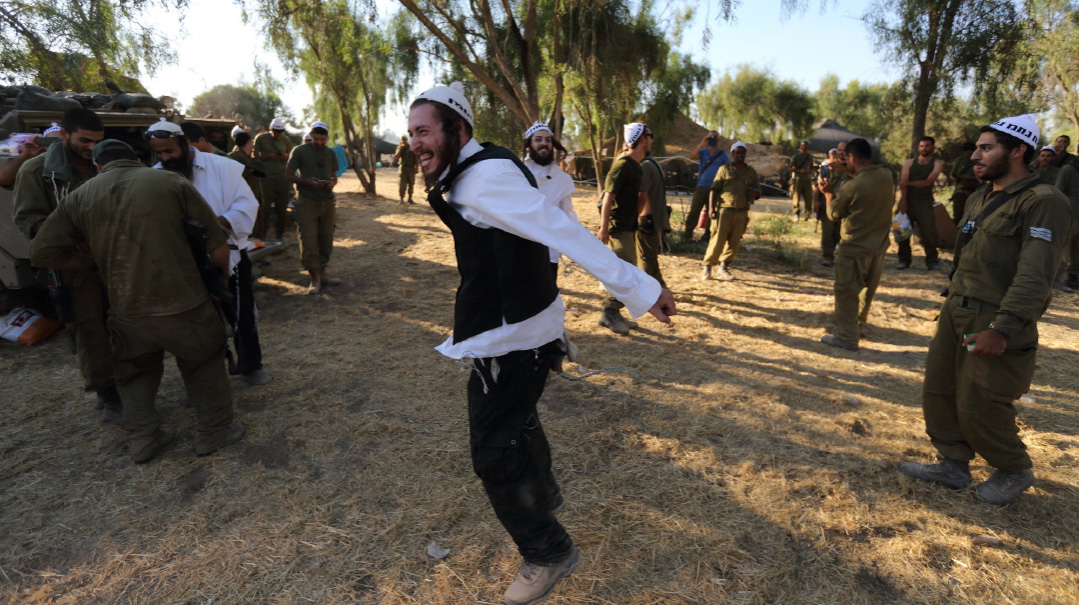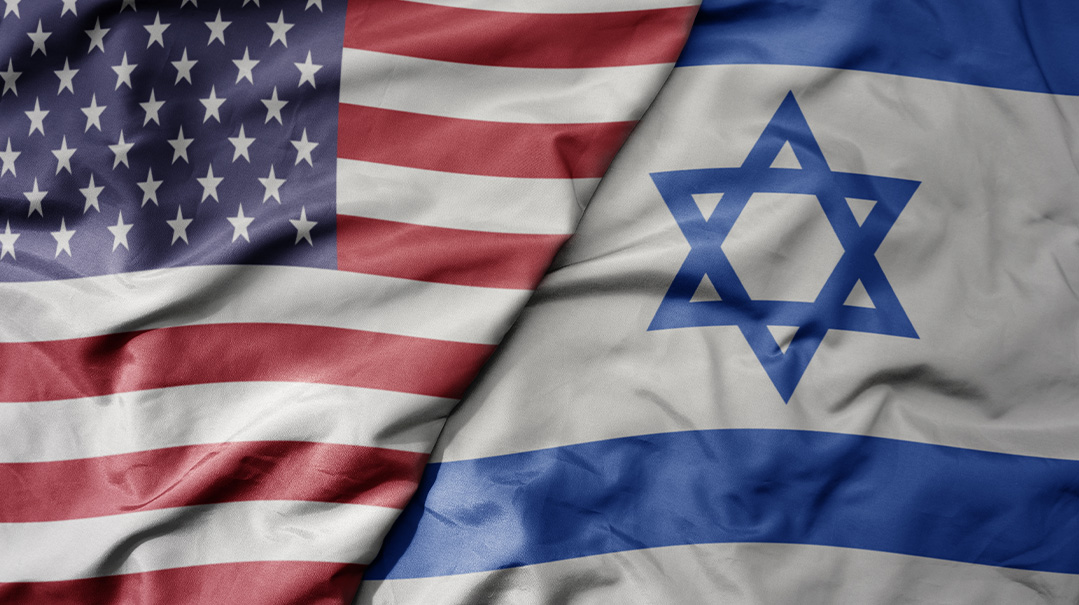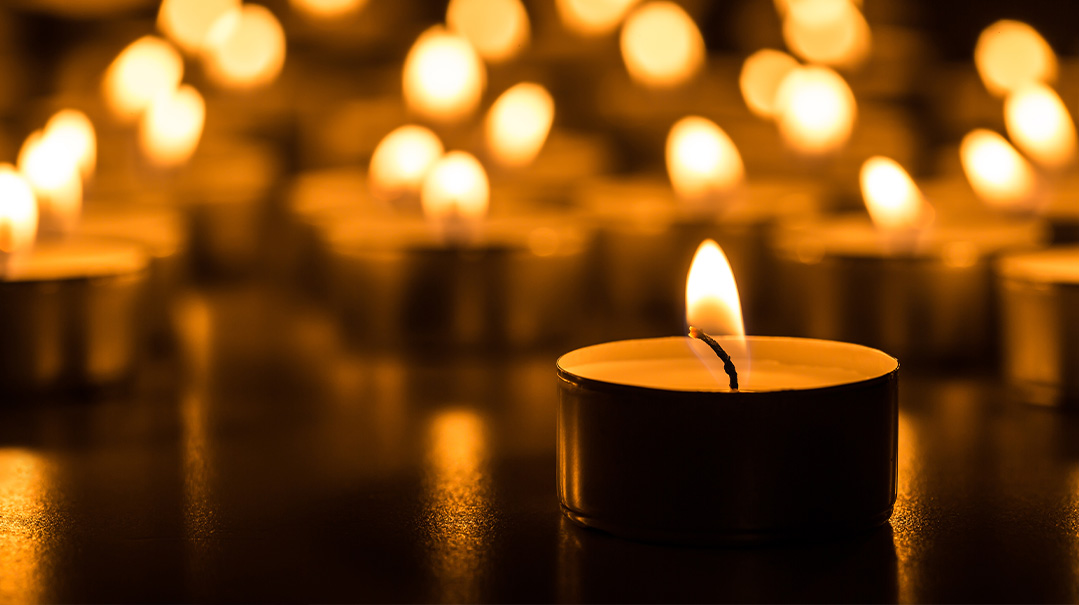Celebrating the Present, Not Just the Past

The miracle of Chanukah is not limited to a past event
I have been waiting an entire year to share an insight from Rabbi Immanuel Bernstein’s Chanukah: Capturing the Light (Mosaica Press). The time has finally arrived.
The Ramban famously quotes at the beginning of parshas B’haalosecha the midrash that all the sacrifices of the Beis Hamikdash were only performed so long as the Temple stood. But the lights of the Menorah will illuminate forever.
On its face, the statement is puzzling, for the lighting of the Menorah is no more performed today than the sacrifice of any of the korbanos.
The Ramban explains that the lights of the Menorah refers to the Chanukah lights. But that explanation only raises other questions. For one thing, the Menorah in the Temple involved a daily miracle: The oil of the middle lamp burned for an entire 24-hour period, while that in the other lamps did not. That miracle testified to the entire world, in the words of the Gemara (Shabbos 22a), “that the Divine Presence rests among Israel.”
Yet there is nothing similarly miraculous about the Chanukah licht. And, unlike the Menorah in the Temple, it is not lit daily, but only during Chanukah itself. So it is difficult to know what the Ramban means when he describes the Chanukah lights as the continuation of the Menorah.
THE ANSWER, Rabbi Bernstein suggests, following Rav Yitzchok Hutner, lies in the name of the Anshei Knesses Hagedolah. Though they had many achievements — establishing the nusach of the daily prayers, closing the canon of holy texts — none of those are the source of their name. Rather that source lies in their having restored the crown of Torah to its glory by including Moshe’s description of Hashem as “the great, powerful, and awesome G-d” in the first blessing of Shemoneh Esreh (Yoma 69b).
The prophets found themselves no longer able to describe Hashem as “the great, powerful, and awesome.” When heathens are croaking in His sanctuary, wherein lies His awesomeness, asked Yirmiyahu. And Daniel wondered, “Heathens are subjugating His children, where is His power?”
But the Men of the Great Assembly responded that His strength lies in His restraint toward the wicked. And His awesomeness exists in the survival of the Jewish People as a solitary sheep among seventy wolves. The latter, writes Rav Yaakov Emden in his commentary to the siddur, is unprecedented:
After all that has happened to us, with all forms of persecutions over thousands of years, there is no nation as pursued as us. [Yet] all those ancient and mighty nations are forgotten, their memory has vanished, their designs have been nullified, and their shadows have passed, while we who cleave to Hashem are alive here, today, together with our Torah.... [W]hen I reflect on these wonders, they exceed, in my estimation, all the miracles and wonders that Hashem performed for our forefathers in Egypt.... And the longer the exile continues, the more the miracle becomes manifest, and the more we are witness to Hashem’s power and His might.
Or as the great mathematician and philosopher Blaise Pascal replied to Louis XIV’s challenge to point out one miracle in history: “The Jews, your Majesty, the Jews.”
The Men of the Great Assembly lived on the cusp between the end of prophecy and the fullest flowering of Torah shebe’al peh. The end of prophecy represented the loss of a certain level of clarity — the clarity of that which can be seen with the eyes. From then on the rule was: “Incline your ear and listen to the Sages.” The wisdom of the Sages replaced prophecy.
And while on one level clarity was lost, at the same time wisdom offered access to ideas deeper and more far reaching that could be attained from prophecy alone. That is what the Men of the Great Assembly did when they returned the crown of Torah: They defined the terms powerful and awesome through wisdom and not through the eyes of the prophets.
That transition period took place during the 12-year reign of Alexander of Macedon, under whom Greece became the principal power in the ancient world and spread its culture throughout the world. The Chanukah story is that of the resistance of Jewish wisdom to the hegemony of Greek wisdom, with its goal of cutting man off from the Divine and any sense of the miraculous.
But the miracle of Chanukah is not limited to a past event. And the celebration of the miracle is as much about the ones who light the Chanukah lights as what the lights commemorate. On Purim, we read the Megillah twice, and the day centers on recounting the miracle. On Chanukah, we refer to the miracle of the sanctified oil and the military victory over the Seleucid Greeks as we light. But one who viewed the lights thereafter would know little of the miracle commemorated. Only that the Jewish People are still here lighting the Chanukah candles, as they have been for millennia.
That same idea is found in the difference between the al hanissim prayer of Chanukah and that of Purim. The former concludes with an additional sentence that has no parallel on Purim: “And they established those eight days of Chanukah to thank and to praise Your Great Name.” We thank Hashem not just for the original miracle, but for the fact that we are still here to offer praise and thanks.
In the days of the Beis Hamikdash, during an era of prophecy, the miracle of the Menorah revealed Hashem’s presence among the Jewish People. Today, the fact that we still exist as a people over two thousand years later, despite all the persecutions directed at us, is a different form of miracle — one defined by the Anshei Knesses Hagedolah. But like the Menorah, it reveals that He continues to dwell among us.
We too are the miracle.
A lichtige Chanukah.
Originally featured in Mishpacha, Issue 888. Yonoson Rosenblum may be contacted directly at rosenblum@mishpacha.com
Oops! We could not locate your form.






